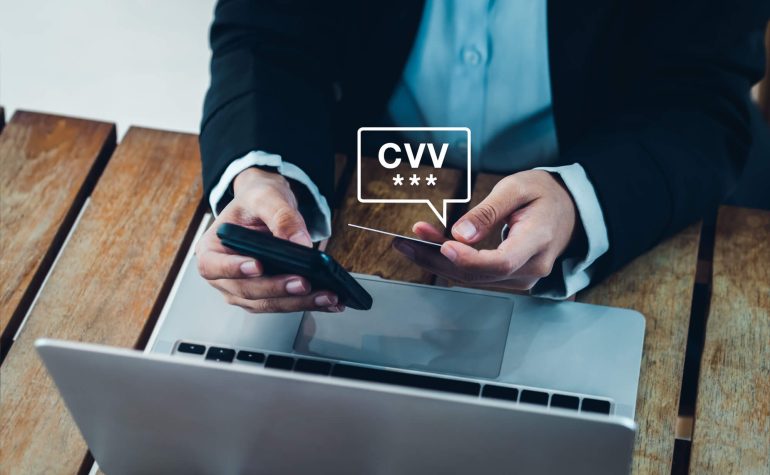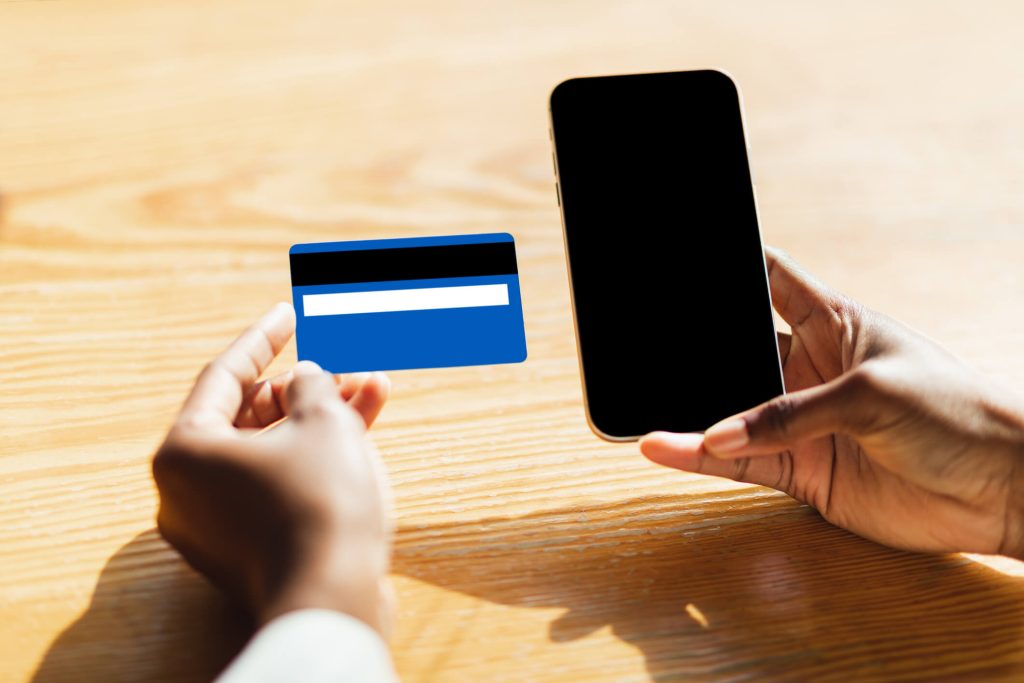
By alphacardprocess May 16, 2024
When it comes to financial security, one of the critical components in the realm of online and card transactions is the Card Verification Value (CVV). This number plays a pivotal role in safeguarding your credit and debit card details against unauthorized use, especially in non-face-to-face transactions. In this comprehensive guide, we will explore what a CVV number is, its importance, where to find it, and how it protects your financial data.
What is a CVV Number?
CVV stands for Card Verification Value, and it is a three or four-digit number that provides an additional layer of security for credit and debit card transactions. It is typically required when making online or over-the-phone purchases, as it helps verify that the person making the transaction has physical possession of the card.
The CVV number is not embossed or printed on the card like the card number or the cardholder’s name. Instead, it is a separate code that is generated by the card issuer and is not stored in the magnetic stripe or chip of the card. This makes it more difficult for fraudsters to obtain the CVV code and use it for unauthorized transactions.
The Purpose and Function of CVV Numbers
The primary purpose of CVV codes is to verify that the person making an online transaction is in possession of the physical card. By requiring the CVV number, merchants can reduce the risk of fraudulent transactions, as it adds an extra layer of authentication beyond the card number and expiration date. CVV codes are not stored in the magnetic stripe or chip of the card, making them less susceptible to theft in case of a data breach.
How Does a CVV Number Work?
When making an online transaction, the CVV Security Code is typically required along with the card number and expiration date. Once the customer enters this information, it is transmitted securely to the merchant’s payment gateway. The payment gateway then sends the CVV number to the card issuer for verification. The card issuer checks the CVV code against its records to ensure it matches the cardholder’s information. If the CVV code is correct, the transaction is approved, and the payment is processed. If the CVV Security Code is incorrect or missing, the transaction may be declined.
The History of CVV Security Codes
Different Types of CVV Numbers
There are different types of CVV numbers used in various card systems. The most common types include CVV1, CVV2, and CVV3.
- CVV1: This type of CVV code is encoded on the magnetic stripe of a credit or debit card. It is used primarily for in-person transactions, where the card is physically swiped or inserted into a card reader. CVV1 is not typically required for online transactions.
- CVV2: CVV2 is the most commonly used type of CVV number for online transactions. It is a three-digit number found on the back of Visa, Mastercard, and Discover cards, usually in the signature panel. CVV2 provides an additional layer of security for online transactions, as it verifies that the person making the transaction has physical possession of the card.
- CVV3: CVV3 is a four-digit number found on the front of American Express cards. It is also known as the Card Identification Number (CID). Similar to CVV2, CVV3 provides an extra layer of security for online transactions involving American Express cards.
Where Can You Find a CVV Number?

Now that we understand the importance of CVV numbers, let’s explore where you can find them on different payment cards.
CVV Number on a Visa Card
If you have a Visa card, you can find the CVV code on the back of the card. It is usually located in the signature panel, which is the white strip on the back of the card. The CVV number is the last three digits in the signature panel, following the cardholder’s account number.
For added security, some Visa cards may have the CVV Security Code printed in a separate box to make it more difficult for fraudsters to read or copy the number. This additional measure helps protect your card information and reduces the risk of unauthorized transactions.
CVV Number on a Mastercard
Similar to Visa cards, Mastercard also places the CVV code on the back of the card. It is typically located in the signature panel, just like the Visa card. The CVV number on a Mastercard is also the last three digits in the signature panel, following the cardholder’s account number.
Mastercard, like Visa, may also use additional security measures such as printing the CVV number in a separate box. This ensures that the CVV Security Code is not easily accessible to fraudsters and provides an extra layer of protection for your card information.
CVV Number on an American Express Card
If you have an American Express card, you can find the CVV security code on the front of the card. Unlike Visa and Mastercard, American Express places the CVV Security Code on the right side of the card, above the cardholder’s account number.
The CVV number on an American Express card is a four-digit code, printed in small font. It is usually located just above the cardholder’s account number and is separated from it by a space. This unique placement of the CVV code on American Express cards helps ensure its security and makes it more difficult for fraudsters to access.
CVV Number on a Discover Card
Discover cards, like Visa and Mastercard, have the CVV code on the back of the card. It is typically located in the signature panel, following the cardholder’s account number. The CVV number on a Discover card is also the last three digits in the signature panel.
Discover, similar to other card issuers, may also employ additional security measures to protect the CVV number. These measures can include printing the CVV code in a separate box or using other techniques to make it more challenging for fraudsters to obtain the number.
CVV Number on a Diners Club Card
For Diners Club cards, the CVV number is located on the back of the card. It is usually printed in the signature panel, following the cardholder’s account number. The CVV security code on a Diners Club card is typically the last three digits in the signature panel.
Diners Club, like other card issuers, may also implement additional security measures to safeguard the CVV number. These measures can include printing the CVV code in a separate box or using other techniques to prevent unauthorized access.
CVV Number on a JCB Card
JCB cards, similar to other card types, have the CVV number on the back of the card. It is typically located in the signature panel, following the cardholder’s account number. The CVV code on a JCB card is also the last three digits in the signature panel.
JCB, like other card issuers, may also employ additional security measures to protect the CVV number. These measures can include printing the CVV code in a separate box or using other techniques to enhance security.
Tips for Safely Using and Protecting Your CVV Number
Now that you know where to find the CVV number on different cards, it’s essential to understand how to safely use and protect this sensitive information. Here are some tips to keep in mind:
- Memorize your CVV code: Avoid writing down your CVV number or storing it in an easily accessible location. Instead, commit it to memory to reduce the risk of it falling into the wrong hands.
- Never share your CVV code: Be cautious of anyone who asks for your CVV number, especially if they contact you unsolicited. Legitimate organizations will never ask for your CVV number via email, phone, or text message.
- Use secure websites: When making online purchases, ensure that the website is secure by looking for the padlock symbol in the browser’s address bar. This indicates that the website has a valid SSL certificate and encrypts your data during transmission.
- Be cautious with online transactions: Only provide your CVV number on trusted websites or with reputable merchants. Avoid entering your CVV number on unfamiliar or suspicious websites to minimize the risk of fraud.
- Regularly monitor your statements: Keep a close eye on your credit card and bank statements to detect any unauthorized transactions. If you notice any suspicious activity, report it to your card issuer immediately.
- Secure your physical cards: Keep your cards in a safe place and never leave them unattended. If your card is lost or stolen, report it to your card issuer immediately to prevent unauthorized use.
- Use two-factor authentication: Whenever possible, enable two-factor authentication for your online accounts. This adds an extra layer of security by requiring a second form of verification, such as a unique code sent to your mobile device.
- Update your contact information: Ensure that your card issuer has your current contact information, including your phone number and email address. This allows them to reach you quickly if they suspect any fraudulent activity on your account.
- Regularly update your passwords: Use strong, unique passwords for your online accounts and update them regularly. Avoid using easily guessable passwords, such as your birthdate or the word “password.”
- Be cautious with public Wi-Fi: Avoid entering your CVV number or conducting sensitive transactions when connected to public Wi-Fi networks. These networks may not be secure, and your data could be intercepted by hackers.
Frequently Asked Questions
Q.1: Are CVV numbers the same as PINs?
No, CVV security codes and PINs are not the same. A PIN (Personal Identification Number) is a numeric password used for in-person transactions at ATMs or point-of-sale terminals. CVV numbers, on the other hand, are used for online transactions and provide an additional layer of security beyond the card number and expiration date.
Q.2: Can I use my CVV number for all online transactions?
Yes, CVV codes are required for most online transactions. However, some merchants may not require it, especially for recurring payments or trusted accounts. It is important to be cautious when entering your CVV number online and only provide it to trusted and secure websites.
Q.3: Can someone steal my CVV number?
While it is possible for fraudsters to steal CVV codes, it is relatively difficult compared to other card information. CVV numbers are not stored in the magnetic stripe or chip of the card, making them less vulnerable to data breaches. However, it is still important to safeguard your CVV code and only provide it to trusted sources.
Q.4: Can I change my CVV number?
No, CVV numbers cannot be changed. They are assigned to each card and cannot be modified or updated. If you suspect that your CVV security code has been compromised, it is crucial to contact your card issuer immediately to report the issue and request a new card.
Q.5: Is it safe to provide my CVV number online?
Providing your CVV number online is generally safe, as long as you are on a secure website. Look for the padlock symbol in the browser’s address bar and ensure that the website has a valid SSL certificate. This indicates that the website is encrypted and your information is protected.
Conclusion
In conclusion, CVV codes play a vital role in ensuring the security of online transactions. By requiring the CVV number, merchants can verify that the person making the transaction is in possession of the physical card. It is important to locate and safeguard your CVV code, as it adds an extra layer of authentication and protection against fraud. Remember to only provide your CVV number to trusted and secure websites, and if you suspect any fraudulent activity, contact your card issuer immediately. By being vigilant and proactive, you can help protect yourself against potential fraud and enjoy secure online transactions.
